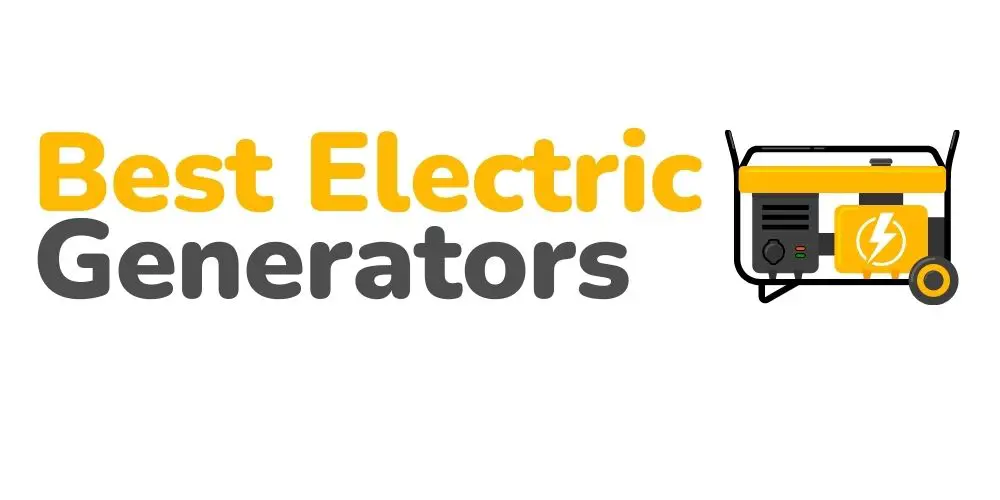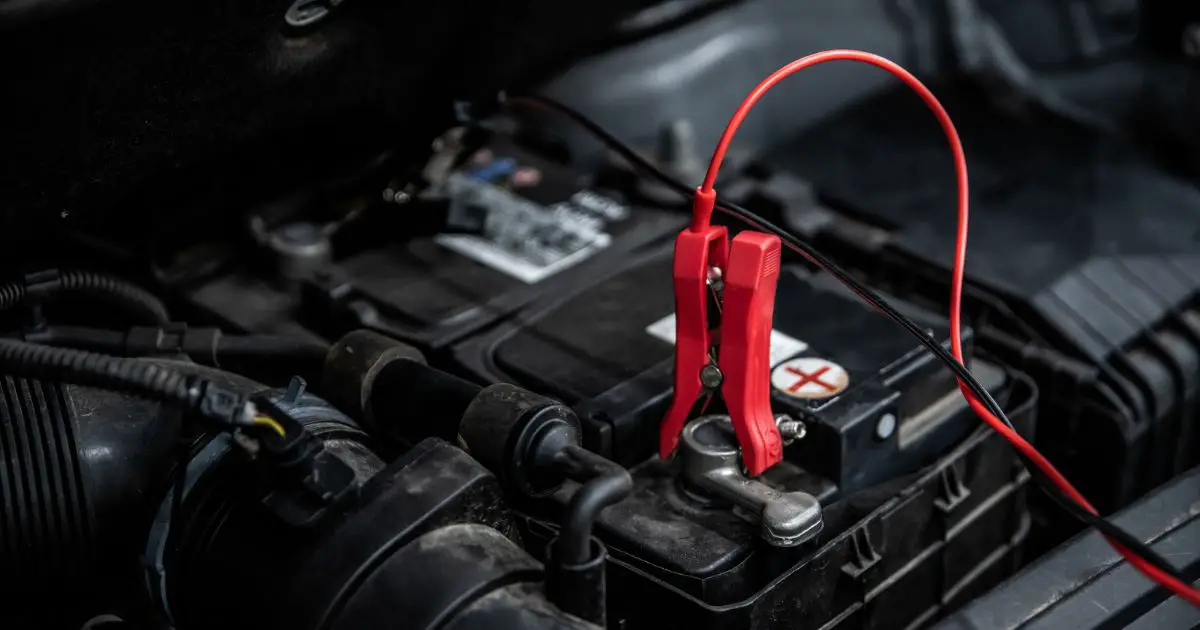Generator having trouble starting?
There could be several culprits, such as a stalling engine or a clogged carburetor. But more often than not, your battery voltage is too low.
The solution is simple, though: recharge the battery. For that, you’ll need a battery charger, preferably a trickle charger, which will maintain maximum battery efficiency.
But hold up, how do you charge a portable generator battery? What are the steps you should take? And how can you calculate the right voltage and current to get the desired output? Here’s all you need to know about charging portable generator batteries.
How Do You Charge A Portable Generator Battery? Step-by-Step
Step 1: Connect The Battery To The Generator
If your portable generator requires an electric start, it must have come with the appropriate wall charger. To avoid any compatibility issues, it’s advised to use the charger provided with your generator. Or use one of similar power rating and quality.
The first thing is to connect the battery to the generator. Of course, you probably already did this when you first bought and installed the generator. But assuming it’s your first time, here’s how to connect the battery anyway.
First, install the battery holder, called the battery tray. Then, fix the battery into the dedicated battery tray.
Then, secure the battery using any suitable method. Read the instructions manual of the generator to find out how to do this, as every battery is different. Either you’ll need to screw it in, fasten a belt around it, or leave it as it is.
Now, unscrew the battery terminals and connect the generator’s red wire to the battery’s positive terminal. Then, connect the black wire of the generator with the negative terminal of the battery. Make sure the connections are tight and properly insulated.
Step 2: Plug-In The Charger
Now, you must plug the charger into the wall outlet. Again, it’s not exactly rocket science. Just make sure that you use a charger that is compatible with your generator.
Step 3: Connect The Charger To The Generator
Next, connect the other end of the charger to the battery port on the generator. Usually, you’ll find the port next to a battery symbol. But this can vary depending on the generator model you have.
You must connect the charger to the right port. Some generators may feature a 12 VDC battery charging port. However, this is not for charging the onboard battery. It is used to charge an external battery, and the generator provides the power for that. It is meant to be connected to the battery you want to charge and not the wall outlet. Connecting it to the wall outlet will prove dangerous for you and your generator.
Step 4: Charge The Unit
Now, charge the unit. It’s recommended to charge the battery for at least 24 hours. The exact charging time required to acquire a full charge depends on the type of battery you have.
Although more modern generators have overcharge protection, it’s never a good idea to take the risk. Avoid overcharging the battery. Ideally, keep it within the 40%-80% range at all times to get the maximum battery life.
In addition to that, it’s recommended to use the generator for 30 minutes at least once a week. This will keep the battery in good shape. If not possible, charge the battery every 15 days for 5 hours to prevent battery degradation.
Step 4 (optional): Self-Charging Generator Batteries
Some generators have self-charging batteries. These batteries automatically start recharging themselves when the generator starts running. They utilize a fraction of the power produced by the generator.
You won’t need to recharge a self-charging battery manually. However, if your battery has run out of charge, it won’t be able to start the generator. And hence, you’ll need to charge it when required manually.
Additionally, it’s recommended to recharge the battery for 5 hours after every 15 days to keep it in top shape. You can do this by either running the generator for that specified time or manually charging the battery.
Calculating The Required Voltages
Voltage Calculation
When performing any electrical work, the voltage and current ratings are curicka. So, for example, you don’t want to connect a charger that outputs 6V to a battery that requires 12V and vice versa.
Luckily, calculating the voltage of the battery is not hard. Usually, the battery will have its rated voltage mentioned somewhere on itself. Similarly, the charger will also have a rated output voltage. So, make sure the output voltage of the charger and the input voltage of the battery match.
If there are no labels, you’ll have to do some manual testing. Set your multimeter to the appropriate voltmeter setting. Then, connect the meter’s red probe to the battery’s positive terminal and the black one to the negative terminal. Then note the voltage reading.
Most lead-acid batteries (similar to the ones used in your car) are rated at 12V. However, the voltage reading may differ by a few volts since your battery is probably not fully charged. The amount of energy left in the battery is called the State of Charge (SoC).
Current Calculation
The current required by the battery isn’t set in stone. Instead, you can safely supply more current to charge the battery faster. First, look for the battery’s ampere-hour rating. Then divide it by the number of hours you want to wait to charge it. This should give you the amperage you should supply the battery. The formula is:
Battery’s Ampere-hour Rating/Number of Charging Hours = Supply Current
Let’s say your battery is rated at 8 Ah, and you want to wait 8 hours to charge it. So you should provide it with 1 A of current. And if you want to charge it in 4 hours, you should provide it with 2 A of current.
Of course, this does come with a trade-off. The more current you supply, the faster the battery will degrade. The battery is also prone to heating up, which, at extreme temperatures, can be detrimental to the acid inside.
Ideally, 2A for an 8Ah battery (which takes 4 hours to charge) is the best choice. It’s slow enough not to degrade the battery and fast enough to give you a quick charge.
What Size Generator Do I Need To Charge My RV Battery?
Most RV batteries have a 12 V rating, so your generator should have an output voltage of 12V DC. However, the current output is also significant. As stated earlier, the current output depends on how fast you want to charge the battery. A typical current output of 8 amps is the most suitable to recharge a 12V battery fully.
As such, make sure your generator has a 3,500-watt power capacity and an 8A current rating. However, if you want to charge the battery a lot faster, consider a more powerful generator of 4,000 watts.
One thing you must consider before you charge the battery is that you don’t overcharge it. Some generators may have overcharge protection. But you shouldn’t take your chances. Overcharging tends to generate heat and boil the acid inside the battery.
How Many Volts Is A Generator Battery?
The battery used in your generator is most likely to be a 12V lead-acid battery. However, you should note that the actual amount of charge in the battery can vary. Even at full charge, your battery may have anywhere between 12.4 to 12.6 Volts. And when not fully charged, the voltages can fall as low as 6 V or even 0 V, at which point your battery will be dead.
How often should I charge my generator battery?
You should charge your battery for 5 hours every 15 days. However, you can charge it earlier whenever needed. It’s best to keep your generator battery at full charge at all times.
How do I know when my battery needs to be charged?
If your battery voltage is low, there will be some symptoms. Initially, your generator will have trouble starting. This is because there isn’t enough charge to create a spark. Eventually, your generator will not start at all, and you’ll need to recharge the battery.
Are there any battery-powered generators?
Generators, much like the engine in your car, require a spark to ignite the combustion chamber. The battery provides this initial spark. Therefore, almost all generators need a battery, even the larger standby ones.
Can I start my generator with a car battery?
Yes, you can! Your car battery supplies a constant voltage of 12 V, and that’s exactly what your generator needs. Most generator batteries are lead-acid batteries, the type used in your car.
What is the best battery for a generator?
You can find new different kinds of batteries. But generally speaking, a lead-acid battery is the best kind for your generator.
Conclusion
Lots of people don’t even know that their generator uses a battery. But much like the engine of your car, every generator requires a battery.
If you’ve started noticing that your generator has trouble starting up, and you know it’s not the engine stalling, you have a low battery. Finding the right charger and learning how to charge the battery properly is vital if you want longer battery life.
To conclude, charging the generator’s onboard battery is as simple as connecting the charger to it. And many generators come with self-recharging batteries!


